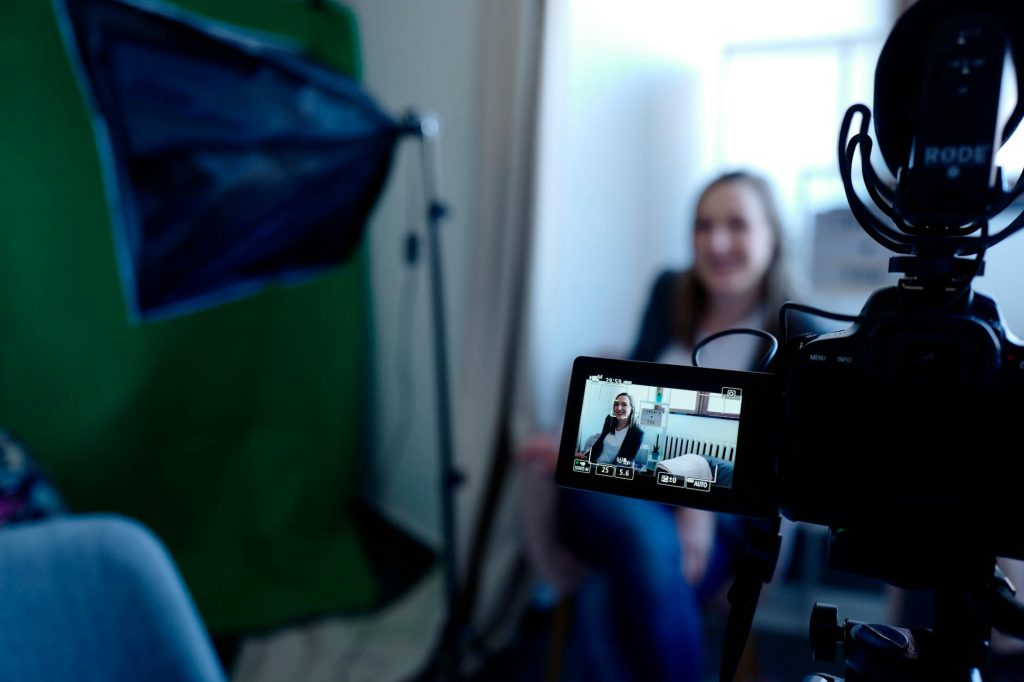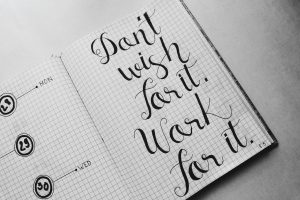Nailing Your Interview Presentation
Scoring big on your interview presentation isn’t just a checkbox on your to-do list. It’s your chance to shine brighter than a neon sign and show ’em what you’ve got.
Why Presentations Matter in Interviews
These presentations are your golden moment to flaunt those skills. Think of them as a chance to talk the talk and walk the walk, proving you’re not just a stack of papers on a desk. It’s all about giving the bosses a front-row seat to your awesomeness.
What Makes a Presentation Rock
For a presentation that’ll have ’em talking at lunch, you need a plan. Start with a bang-up intro to tell them why they should care. In the middle, drop some knowledge bombs with relevant stories or examples. Wrap it all up with a conclusion that leaves ’em thinking, “We need this person on our team, pronto!”
Tips for Leaving a Mark
Want the panel to remember you like a catchy jingle? Make your presentation pop with a little audience interaction—they’ll remember you were the one who got ’em involved. Bring some visuals along, too—pictures speak volumes and they might help the words stick. And, don’t forget to stand tall and confident. A little swagger goes a long way when showing you’re the real deal.
By focusing on why these presentations are your best friend, nailing the parts that make one soar, and using tricks to stand out, you’ll be ready to wow ‘em and snag that job. For more ace advice, check out our article on interview preparation tips.
Preparing for Your Presentation
Getting ready for a presentation can be slightly nerve-wracking, but with a bit of legwork beforehand, you’re bound to knock it out of the park. Here, we’ll take a closer look at getting yourself geared up: knowing the company and job inside out, planning your presentation’s flow, and polishing up those public speaking chops.
Researching the Company and Role
Before anything else, dig deep into what the company is all about. Snag any nuggets on their backstory, what they stand for, and the job you’re eyeing. Hunt up info on their latest happenings, workplace vibes, what they offer, and what’s going on in their particular field. Think of how your own background can be their missing puzzle piece, and make sure to highlight it during your talk.
It’s your moment to shine—illustrate how you’re not just another candidate but the candidate for them. Show you get them and want to be part of their world by slipping their info into your spiel. If you’re stumped on where to start with your presentation, have a look at some tips from our article on common interview questions and answers.
Crafting Your Presentation Outline
Set out a blueprint for your talk—it’s like the backbone that keeps the whole thing together. First, jot down what you want to achieve and the key takeaways you hope to leave behind. Create a path that gets your audience hooked and guides them—nice and easy—through your main points.
Make sure your outline packs a punch right from the get-go. Open with a bang to pull them in, have a solid middle that lays out your ideas clearly, and wrap it up strong to drive your message home. Toss in some visuals like slides or props to break things down into bite-sized bits. Tweak your content to fit the job and what the company might be looking for.
Rehearsing Your Presentation Skills
Running through your presentation is where you get to tweak and perfect your delivery. Think of it as sanding down the rough edges. Speak your content out loud a bunch of times to nail it and keep an eye on how long it runs. Practice your tone, gestures, and speed to project confidence and professionalism.
Grab a buddy or two—or maybe someone who’s good at picking apart speeches—to sit through a practice run. Their feedback is gold when you’re fine-tuning your key points, filling in any blanks, or switching things up based on what they reckon. For some nifty pointers on talking like a pro, check out our article on interview preparation tips.
By putting the hard yards into learning about the company, sketching your outlines, and rehearsing, you’ll come away jazzed up and raring to wow your interviewers. So dive into that prep with gusto, and let them see just how ready and eager you are to step up to the plate.
Keepin’ Folks Hooked
You want to make sure folks remember that interview presentation of yours. Start off with a bang and keep ’em interested until the end. We’re gonna chat about how to kick things off right, talk to folks like they wanna listen, and make sure they actually catch what you’re throwin’ with visuals that stick.
First Impressions Are Everything
How you start your pitch matters. You want folks sitting up and taking notice. Try launching with a question that gets everyone thinking, a little story that hits home, or a fact that’ll raise some eyebrows. These tricky openers are like your secret weapon in getting a nod from the crowd and setting the stage.
Tips for Saying It Right
Talkin’ clear and plain is the secret sauce for nailing that interview chat. Keep your eyes on the crowd, speak up nice and clear, and mix up your voice so they hang on every word. No fancy jargon here; keep it simple so no one’s scratching their head. It’s not just what comes outta your mouth, but how it does.
Making Sense of Stuff with Visuals
Visuals get things across without boggin’ down your chat. Use slides, charts, graphs, and images to make the tough stuff a breeze to follow. Keep all this eye candy neat and sweet to back up your words. Check out this plain table for showing off numbers:
| Type of Visual | What It’s Good For |
|---|---|
| Slides | Keeps folks’ eyes on you |
| Charts | Makes numbers a breeze |
| Graphs | Spots patterns easy-peasy |
| Images | Adds a little pizzazz |
Tossing in some visuals like this can hit your message home, clear up puzzlin’ pieces, and make you memorable. Practice a bit with these props to make everything flow like you’ve done it a million times. For more juicy nuggets on killing that interview, swing by our write-up on tips for acing your interview.
Handling Q&A Session
Getting through interviews isn’t just about the pitch; the Q&A part is where you can really shine by showing what you know and how well you can chat. Here we’ll chat about getting ready for tricky queries, handling those challenging questions, and staying cool, calm, and collected when the heat’s on.
Anticipating Potential Questions
Before you walk into that Q&A session, think ahead. What might they ask? It all comes down to your presentation, what you’re applying for, and what makes the company tick. By putting yourself in their shoes, you can already address the usual suspects. Check out our common interview questions and answers to get a leg up on this.
| Possible Question Categories |
|---|
| Your Past Experiences |
| Project Details and Clarifications |
| What’s Next for You? |
| Tech and Industry Know-How |
Strategies for Answering Tough Questions
Everyone gets a curveball now and then. When faced with a question that makes you think twice, keep it cool. Listen up, take a breath, and get your thoughts together. Maybe try the STAR approach (Situation, Task, Action, Result) for those behavioral types. It shows your problem-solving chops. Want to dive more into behavioral questions? Visit our behavioral interview questions and answers.
Tips for Maintaining Confidence
Confidence can make all the difference when speaking up in an interview. Keep eye contact, speak clearly and don’t rush. It’s not the end of the world if you pause to think—better to be thoughtful than fast. Turn nerves into a positive drive to give well-considered answers. Need more on staying strong during interviews? Check our interview preparation tips.
Handling the Q&A professionally is your shot to stand out. Be ready for questions, work on those tricky ones, and keep that confidence up to leave a mark on your interviewers. With these tools, you won’t just be another candidate; you’ll be the one they remember.
Post-Presentation Follow-Up
You wrapped up your interview presentation, huh? Well, you’re not done yet. The post-presentation game is your golden chance to show professionalism and ensure you stand out in the recruiter’s mind.
Tossing in Some Thank Yous
After your presentation, it’s time for some pen and paper action. A simple, heartfelt thank-you note or email can go a long way. This isn’t just good manners; it’s a nifty way to highlight your keen interest in the job. Pop over to our article on interview thank you note examples if you need some inspiration.
Giving Yourself an Honest Review
Take a chill moment to chew over how your presentation went. What parts killed it, and where did you stumble a bit? If you got feedback, awesome! Use it to polish those rough edges for next time. Learning from this gig sets you up to do even better in future attempts.
Keeping the Prep Train Rolling
Okay, so you finished an interview presentation, but don’t kick back completely. Stay in the loop with industry happenings, get comfy with common interview questions and answers, and keep those presentation skills sharp. Staying sharp not only amps up your confidence but also slides you into the “always ready, always improving” category.
By swinging back with a thank-you, sizing up your performance, and keeping the prep going, you make that interview presentation work harder for you. These steps put you a cut above and show potential employers you’re serious about the gig. Plus, with each interview, you’re adding tools to your life-skills toolbox.




